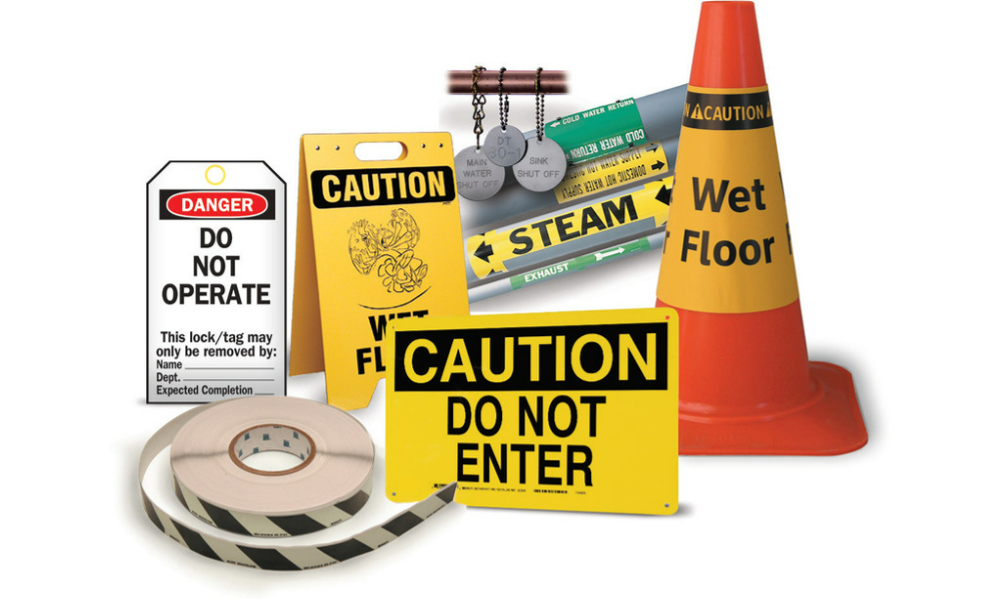Research by Brady Canada reveals that the use of signs and labels at work can improve the productivity and well-being of employees

This article was produced in partnership with Brady Canada Inc.
Over 277,000 Canadians are injured at work every year. That adds up to over 700 incidents a day, and with a growing skills gap forcing more inexperienced workers onto the job site, that number could get worse before it gets better.
Fortunately, there’s a simple and cost-effective solution that goes a long way to preventing many of these injuries. By adding clear visual cues such as signs, labels, colour-coding and floor markings, organizations can reduce accidents, increase productivity and enhance the overall well-being of their employees.
A new white paper by Brady Canada Inc. provides a useful primer on creating a safer visual workplace.
The eyes have it
People are visual beings. In fact, 50% of the human brain is dedicated to finding information and then interpreting what this information means.
The visual workplace helps people process all of this information, according to expert Dr. Gwendolyn Galsworth, who likens a poorly visualized workplace to driving on a road without lines, signs or traffic lights.
“You can probably make it, but you are likely to pay a terrible price,” she says in the 2017 edition of her book "Visual Workplace: Visual Thinking."
Lean and learn
One important advantage of an information-rich visual workplace is the boost to productivity. Lean concepts like the Kaizen approach to continuous improvement are enhanced when visual devices are included.
Visual reminders ensure that Lean improvements are easily understood and consistently followed long after a Kaizen project is over. A visual workplace, says Dr. Galsworth, is not Lean’s little helper. They are “equal and powerful partners in operational excellence.”
“Visuality grooms the work environment as well as the work culture, and paves the way for a resounding Lean success.”
There are numerous benefits to a visual workplace. In the following summary, we detail some of the most important.
Information deficits and productivity
A primary cause of inefficiency is an information deficit, where employees simply lack the knowledge they need to do their jobs effectively. Visual labelling on inventory, processes and other locations in the workplace reinforces an employee’s training and helps them find what they need quickly without searching, waiting, or simply giving up.
Better training
Employees tend to learn by seeing so workplace visuals play an important role in job training. By visually reinforcing the training within a work activity, employees are able to do their jobs with fewer mistakes and less stress.
Improved safety
Visual cues such as signs and hazard warnings can significantly raise safety awareness among employees. By making safety information easily accessible and visible, employees are constantly reminded of potential hazards and the importance of safe work practices, leading to fewer accidents and injuries.
Emergency response
Clear visual communication is critical in guiding employees to safety. Emergency exit signs, evacuation routes, and fire extinguisher locations are all examples of visual cues that can help workers respond quickly and effectively during an emergency.
Ergonomics
Improper lifting techniques, badly designed workstations, and other conditions may not trigger an immediate injury, but over time they can add up to pain, lower performance and worsening well-being. A visual workplace can promote better ergonomics by using visual cues to indicate best practices.
As a leading supplier of visual accessories, Brady Canada Inc. has drawn on decades of experience in the industry to produce a white paper that outlines some of the key benefits of the visual workplace.
The paper, which can be downloaded here, provides tips that improve Lean practices as well as an introduction to important visual devices that increase safety, boost productivity, and enhance the well-being of Canadians in the workforce today.





